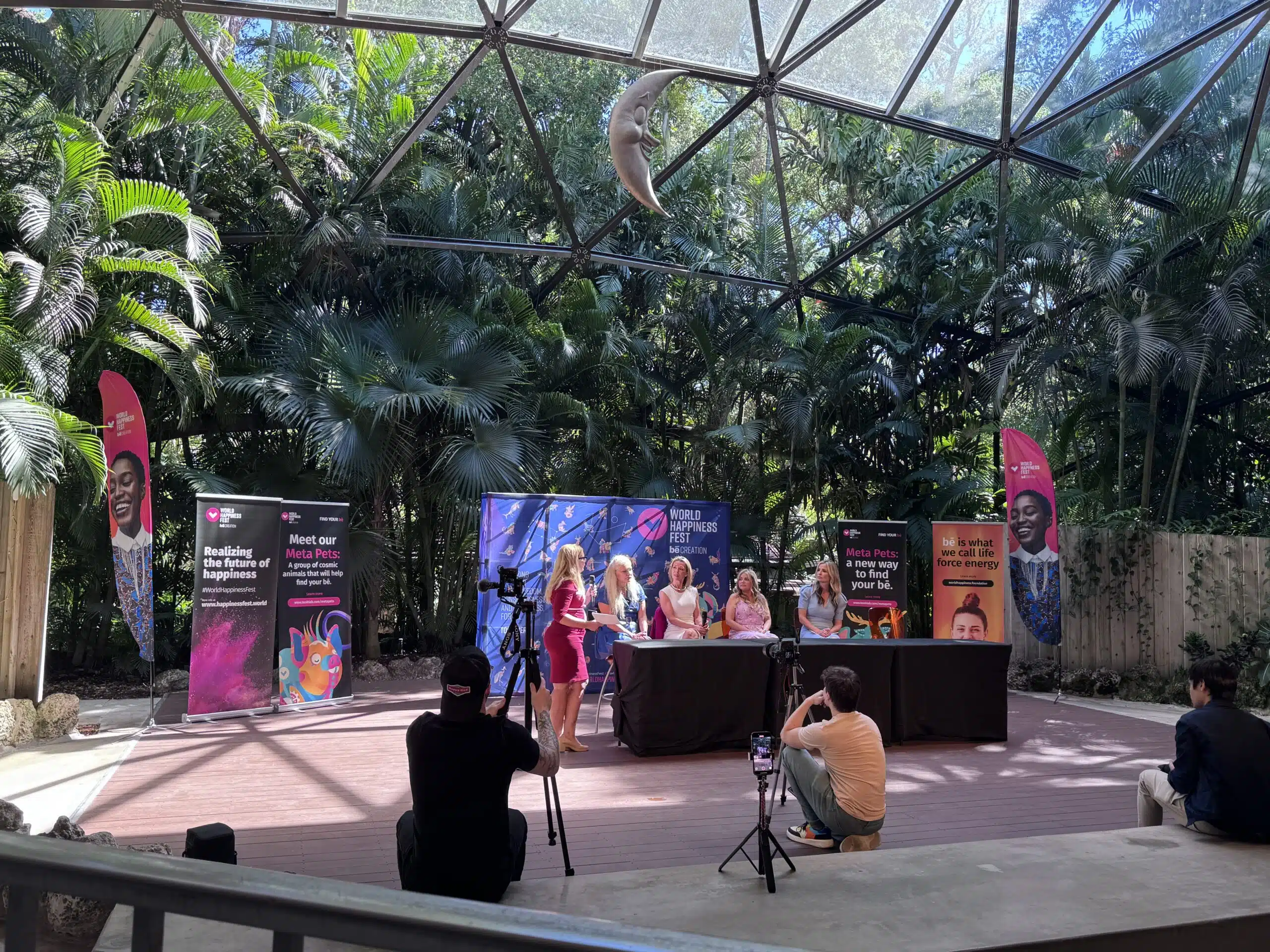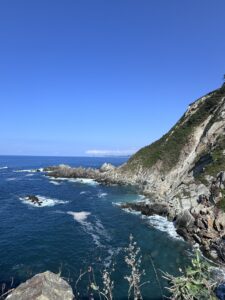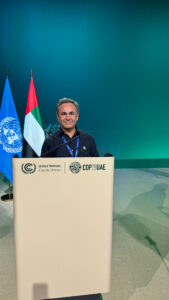
World Happiness Foundation Position on SDG 17: Global Unity and Collective Action
Fostering a Global Family United by Abundance and Purpose. At

Life on land (United Nations Sustainable Development Goal 15) stands at the core of a healthy planet and sustainable happiness. Over the past decades, the global community has made some strides – more land has been brought under protection (nearly 17% by 2020, meeting a key Aichi target) and countries recently agreed to conserve 30% of Earth’s land and water by 2030 under the Kunming–Montreal Global Biodiversity Framework. Yet our planet’s biodiversity is still in crisis. Wildlife populations have plummeted by an average 69% since 1970, and approximately 1 million species are at risk of extinction within decades unless we change course. Every year, an estimated 10 million hectares of forest – an area about the size of Portugal – are still cut down, destroying vital habitats and carbon sinks. These alarming trends have placed biodiversity loss among the top global risks for the coming decade, alongside climate change and extreme weather. In fact, the world is off-track on SDG 15, with nature’s decline undermining progress on multiple fronts. The UN’s 2023 SDG progress report warns that goals on hunger, health, and biodiversity (SDGs 2, 3, 14, 15) are all stagnating or reversing. Science is clear: without urgent action to protect nature, we jeopardize not only wildlife but human well-being and the entire 2030 Agenda – one analysis finds that ongoing climate and ecosystem degradation could undermine 80% of the SDG targets related to poverty, hunger, health, water, cities and more.
The World Happiness Foundation (WHF) views SDG 15 as absolutely critical because humanity’s happiness and future prosperity depend on living in harmony with our extended family of life. In our paradigm of “Happytalism,” we measure societal success by the well-being of all members of Earth’s community – human and non-human alike. This ethos reflects our belief that all species have intrinsic value and a right to flourish. As Luis Miguel Gallardo, our founder, emphasizes, Happytalism highlights “the interdependence of species and the interconnection with nature and the planet”. Humans are not separate from the web of life; rather, our fate is inseparable from that of forests, animals, and ecosystems. Good human lives ultimately require a thriving natural world. Thus, achieving SDG 15 is not an isolated environmental issue – it is foundational to a happier, healthier, and more ethical world for everyone. We reimagine SDG 15 as “Interspecies Harmony & Biodiversity,” a positive vision where human progress never comes at the expense of other living beings. In this vision, we go beyond merely halting biodiversity loss – we actively promote a paradigm of interspecies equality, protecting and restoring wildlife and habitats as part of our family. By caring for nature as kin, we uphold both planetary health and human happiness, embodying our credo that when nature thrives, people thrive.
SDG 15 (“Life on Land”) is traditionally defined as urging nations to protect, restore, and sustainably use terrestrial ecosystems, manage forests, combat desertification, and halt land degradation and biodiversity loss. The World Happiness Foundation wholeheartedly embraces this mandate and expands it by reframing SDG 15 as “Interspecies Harmony & Biodiversity.” This reframing emphasizes a multidimensional, compassionate view of our relationship with nature. We affirm that every species – from the great elephants and whales to the tiniest pollinating bee – plays a unique role in the tapestry of life, and each has inherent worth beyond its utility to humans. An abundance-based approach to SDG 15 means recognizing that protecting nature is not a zero-sum burden or a charitable afterthought, but rather integral to human well-being, resilience, and joy.
In this vision of Interspecies Harmony, humanity becomes a responsible steward and partner to the rest of life on Earth. We move from an old paradigm of domination and resource extraction to one of respect, reciprocity, and restoration. This entails valuing qualitative outcomes, not just quantitative targets. For example, beyond counting how many hectares of forest are saved from deforestation, we focus on how vibrantly those forests are flourishing and sustaining all who live in and around them. Success is measured not only in fewer extinctions avoided, but in more ecosystems restored to abundance – more forest cover teeming with wildlife, more wetlands revived, more degraded lands healed into fertile green. We champion the concept of “biophilia” in public policy – infusing a love and reverence for nature into education, urban planning, and economics so that people grow up feeling connected to other beings. In practice, this means supporting initiatives like urban green spaces and biodiversity-friendly agriculture, and recognizing indigenous peoples and local communities as custodians of ecological wisdom. It also means treating animal well-being and habitat protection as key outcomes of development projects, rather than externalities. By embracing interspecies harmony as a goal, we foster a culture that celebrates coexistence over exploitation – where a flourishing wild tiger or a healthy bee colony is seen as a marker of progress just as much as a rise in human incomes.
Our Happytalist perspective asserts that all life is precious, and by enriching the community of life, we enrich humanity too. This approach aligns with emerging global movements to grant legal rights to nature – from rivers and forests being recognized as legal persons, to nations adopting “ecological civilization” in their constitutions – which reflect the same ethos of equality and respect for our fellow creatures. Interspecies Harmony & Biodiversity calls for laws and economies that account for the true value of ecosystem services and animal lives, not only their material worth. It means teaching our children that a tree is worth more standing than cut, that an elephant is worth more alive than ivory, and that our moral circle must widen to include all sentient beings. By nurturing empathy for other species, we also deepen our empathy for each other – creating a more compassionate society overall. In short, reframing SDG 15 in this multidimensional way transforms it from a technical conservation agenda into a holistic mission of ethical development: one that integrates science, spirituality, and sustainability, and acknowledges that happiness on Earth will be shared – or not at all.
Crucially, SDG 15 is deeply interconnected with all 16 other Sustainable Development Goals – progress or failure in “Life on Land” reverberates across the entire sustainable development agenda. The health of our forests, soils, and species is the bedrock upon which human societies stand. Protecting nature is protecting ourselves. As UN and WWF analyses have highlighted, environmental decline adversely affects every dimension of the SDGs, and if current trends continue it could undermine the majority of SDG targets worldwide. Conversely, restoring ecosystems can catalyze gains in poverty reduction, food security, health, climate stability, and peace. Some examples illustrate how safeguarding life on land supports progress across the SDGs:
These are just a few examples. In reality, every SDG is intertwined with nature’s fate, and in turn achieving SDG 15 makes many other goals more attainable. Stable and diverse ecosystems underpin stable societies: they support livelihoods (SDG 8), reduce inequalities by sustaining the rural poor (SDG 10), enhance sustainable cities via green spaces (SDG 11), and can even help prevent conflicts over resources, thereby contributing to peace and strong institutions (SDG 16). Understanding these interdependencies, the World Happiness Foundation advocates a systems approach: we must address human, economic, and environmental needs together. By striving for all goals in unison – ending poverty and hunger (which is impossible without healthy soils and pollinators), improving health (impossible without clean air, water, and disease regulation by nature), and so on – we create the conditions for people and planet to flourish as one. In short, SDG 15 cannot be achieved in a vacuum; it is both dependent on and instrumental to progress across the entire 2030 Agenda. Nature is the thread that weaves through the tapestry of sustainable development and human happiness. Realizing this, more leaders and institutions are echoing that “the SDGs rely on nature” as a foundational pillar. Our mission is to amplify this message: protecting life on land is not a luxury – it is essential to achieving the world we want.
Truly accomplishing SDG 15 will require more than just designating new protected areas or writing better wildlife laws – it calls for a profound mindset shift in how humanity views and values nature. We must move beyond the old scarcity-driven mindset that treats nature as a commodity to be consumed, fought over, or sacrificed in the name of progress. For centuries, economic development was pursued with a paradigm of exploitation and domination over nature: forests were seen as timber to fell, wildlife as resources to harvest, land as an empty canvas for human use. This mindset assumed an inherent trade-off – that human prosperity must come at the cost of ecological health, as if we live in a zero-sum world where either people thrive or nature does. Such a philosophy has proven shortsighted and self-defeating. It has bred fear, competition, and a “take what you can before it’s gone” approach that indeed led to nature’s depletion worldwide. In this scarcity paradigm, conservation often felt like a losing battle against economic forces, and many policymakers framed environmental protection as a costly obstacle to growth.
Happytalism flips this narrative. It invites us to replace fear with trust, greed with gratitude, and shortsightedness with stewardship. We recognize that one community’s flourishing need not come at the expense of another’s – and crucially, that human flourishing need not come at the expense of other species or future generations. In an abundance mindset, we start from the premise that Earth has enough for everyone’s need, though not for everyone’s greed. Rather than viewing nature as a pie of limited resources to be divided, we see it as a gift to be nurtured so that it can continue giving generously. The truth is, our planet remains rich in renewal potential: forests can regrow, wildlife can rebound, degraded landscapes can be restored to Eden – if we choose to collaborate in healing. Gallardo and others point out that with today’s technology and knowledge, humanity actually possesses the means to meet everyone’s basic needs and simultaneously protect the planet, ushering in an era of shared abundance. The limiting factor is not the biosphere’s bounty but our own consciousness and will. Happytalism urges a shift in consciousness: to see that we don’t have to fight over nature’s gifts; we can regenerate them and share them.
In practical terms, an abundance approach to SDG 15 means investing in long-term, cooperative solutions over short-term exploitation. It asks us to perceive conservation not as a cost, but as a common-sense investment in our collective future – an investment that yields tremendous returns. For example, preserving a mangrove forest might seem to “lock away” land that could have been commercially developed, but that mangrove yields flood protection, fisheries support, carbon sequestration, and ecotourism income worth far more than its timber value. Studies repeatedly show that the economic benefits of conservation (measured in ecosystem services and disaster avoidance) far exceed the profits of destructive extraction. One landmark report estimated that protecting 30% of the planet could generate $250 billion in economic output annually and prevent over $500 billion in climate and biodiversity damages per year. These are abundance economics: recognizing that “nature-positive” strategies create more value than they cost, especially when factoring in human well-being. As the World Economic Forum notes, transitioning industries to nature-friendly pathways (sustainable agriculture, forestry, fisheries) could unlock trillions of dollars in new business opportunities and millions of jobs. In short, caring for nature is not charity – it is enlightened self-interest and smart economics in the long run.
An abundance mindset also transforms how we approach trade-offs and innovation. Rather than asking “how much economic growth must we forego to save species?”, we ask “how can innovation allow us to grow without destruction – or even better, to grow by healing nature?” This leads to exciting solutions: bioeconomies where resources are renewable and waste is reused, nature-based jobs in reforestation and regenerative farming, green infrastructure that restores ecosystems (like coral reef restoration to protect coasts), and technologies that reduce land footprint (like cultured meat lessening the need for pasture). We already see glimpses of this future: countries paying citizens to plant trees and restore lands, corporations committing to deforestation-free supply chains, and the rise of concepts like the “circular economy” and “doughnut economics” that aim to keep human activity within ecological limits. Happytalism applauds and amplifies these ideas, reframing SDG 15’s pursuit as an opportunity to build a better kind of prosperity. For instance, instead of focusing on the number of logging concessions curtailed, we focus on the new livelihoods created through forest stewardship programs. Instead of lamenting the closure of a polluting mine, we highlight the growth of sustainable ecotourism and the preservation of natural heritage that can enrich communities for generations.
Critically, shifting from exploitation to abundance also means sharing knowledge and responsibility globally. Just as in global health, where one country’s disease threat is a threat to all, in conservation one nation’s actions (or inactions) affect the whole planet. We have enough cumulative scientific and indigenous knowledge today to solve most conservation challenges – from how to breed endangered species, to how to restore soil fertility and rewild areas. The abundance paradigm encourages open collaboration: countries, scientists, indigenous leaders, businesses sharing best practices and technologies (like drought-resistant crops or anti-poaching drones) rather than hoarding them. It also means richer nations supporting poorer ones through finance and capacity-building, acknowledging that biodiversity is a global commons. The cost of saving nature – estimated in the hundreds of billions per year – is a tiny fraction of the world’s GDP (less than 1%) and eminently affordable if we prioritize it. For perspective, as noted earlier, preventing pandemics and preserving ecosystems might cost ~$20 billion annually – less than 5% of the economic losses from pandemics each year. Likewise, closing the global biodiversity financing gap (roughly $700 billion/year) is small compared to global military spending or fossil fuel subsidies. The abundance mindset says: we have the money; we have the knowledge – what we need is the moral courage and will to use them for the common good.
By embracing abundance and cooperation, we reject the notion that conservation is about making do with less. Instead, it’s about doing things differently to create more — more nature, more well-being, more security. When we protect a rainforest, we create abundance: we allow countless species to thrive, we generate fresh air and water, we maintain a stable climate, and we inspire human awe and happiness. In an abundant world view, a flourishing Earth is a foundation for flourishing economies and societies, not a footnote. We shift from treating nature as a problem to fix or a treasure to guard jealously, to celebrating nature as a partner with whom we can co-create a thriving future. As Gallardo writes, it’s about igniting a joyful global movement to “restore harmony” with nature, where humanity sees itself not as nature’s rival but as its healer and protector. This hopeful reframing energizes action: it’s easier to rally people around a positive vision of abundant forests and happy coexistence than around doom and sacrifice. In sum, rethinking SDG 15 through Happytalist abundance transforms our approach from defensive and reactive (“stop the destruction”) to proactive and generative (“grow a nature-rich world”) – and that mindset shift may be the missing ingredient needed to achieve a true ecological turnaround.
Ultimately, the World Happiness Foundation’s vision for SDG 15 is profoundly hopeful and deeply ethical. We imagine a future of Fundamental Peace not just among humans, but between humanity and nature – a world where all beings can live free from fear and suffering. In our philosophy, this state of harmony is part of what we call “Fundamental Peace – freedom, consciousness, and happiness” for all sentient life. A world of interspecies harmony is one in which human society is secure and prosperous because the web of life is intact and vibrant. In such a future, the forests are alive with the sounds of birds and insects, extinct species are virtually zero, children grow up knowing what tigers, elephants, and frogs look like in the wild (not only in books), and natural beauty is accessible to enrich everyone’s soul. Humanity, rather than being a force of planetary destruction, has become a guardian and gardener of Earth – cultivating abundance for every member of our planetary family. This is not a utopian fantasy; it is a practical and necessary goal. We have examples already: countries like Costa Rica that doubled their forest cover while growing their economy, or communities that created “peace parks” where former conflict zones are now wildlife reserves generating tourism and goodwill. They show that peace with nature is possible, and it yields dividends in human peace and development.
Achieving this shared future hinges on collective action and shared responsibility at all levels. Every stakeholder has a vital role to play in bringing SDG 15’s vision to life:
In conclusion, the World Happiness Foundation calls on the global family to embrace an abundance-minded, compassionate approach to SDG 15. Let us redefine “progress” to mean living in harmony with nature, treating all species as partners in our shared journey rather than resources for our use. Life on land is not just one goal among many – it is the living heartbeat of sustainable development and human flourishing. By investing in forests, wildlife, and healthy ecosystems, we are in fact investing in a safer, richer future for humanity. Our vision is both ambitious and achievable: a world where human prosperity and interspecies harmony grow together, where each year brings more forests standing tall, more species brought back from the brink, and more communities thriving through their connection with nature. In this world, a child born in 2030 will grow up hearing not about the last tiger or the last rainforest, but about how humanity came together to save and restore the wondrous abundance of life on Earth.
Such a future is within our reach – if we choose it. We invite every nation, organization, and individual to join us in making this vision real. As Happytalism teaches, true happiness and peace can only be achieved when we remember that we are not owners of this planet, but family among family, kin to all living things. By upholding interspecies equality and caring for our planet as our home, we unlock the potential for unprecedented well-being and joy. The stakes could not be higher, and the rewards could not be greater. The future of happiness, for humanity and all life, depends on what we do now for SDG 15. Together – in a spirit of abundance, love, and shared purpose – we can heal our world and usher in an era where all life flourishes.Sources: This statement has drawn on the latest scientific findings and thought leadership from the United Nations, World Economic Forum, WWF, IPBES, World Bank, and other leading institutions to provide an evidence-based, holistic perspective. Key data on wildlife decline, species extinction risk, deforestation rates, and ecosystem services are from UN and WWF reportsf. Global risk rankings and SDG progress assessments are from WEF and UN SDG reports. Insights on the economic and health benefits of protecting nature come from sources like WWF, WEF, and peer-reviewed studies. The principle of interdependence and interspecies equality is informed by WHF’s Happytalism framework and the writings of Luis Miguel Gallardo, aligned with emerging global movements for the rights of nature. Indigenous peoples’ vital role (protecting ~80% of biodiversity) is highlighted by World Bank and WEF research. All these sources reinforce a singular truth: humanity’s fate is inseparable from the fate of life on land, and by embracing a new paradigm of abundance and harmony, we can achieve a happier, more sustainable world for all.

Fostering a Global Family United by Abundance and Purpose. At

Introduction: Our Blue Planet at a Crossroads Oceans cover over

Introduction: Climate Balance as the Foundation of Sustainable Happiness Climate